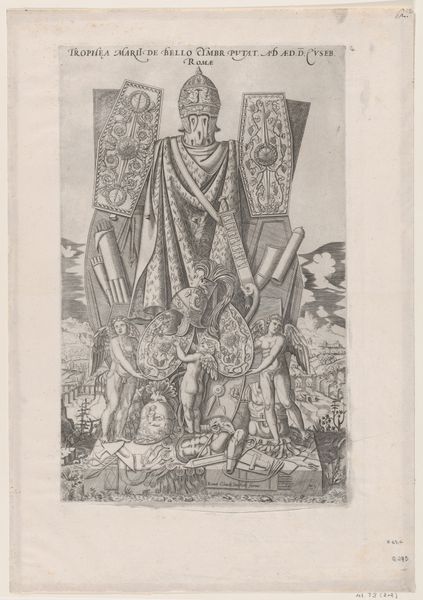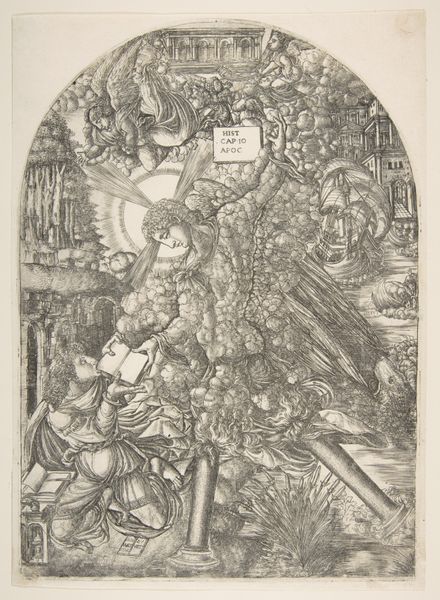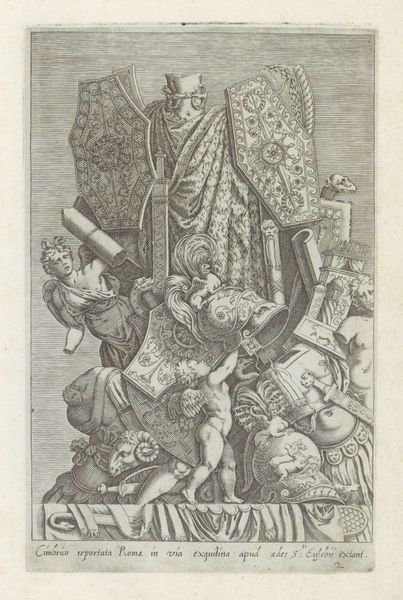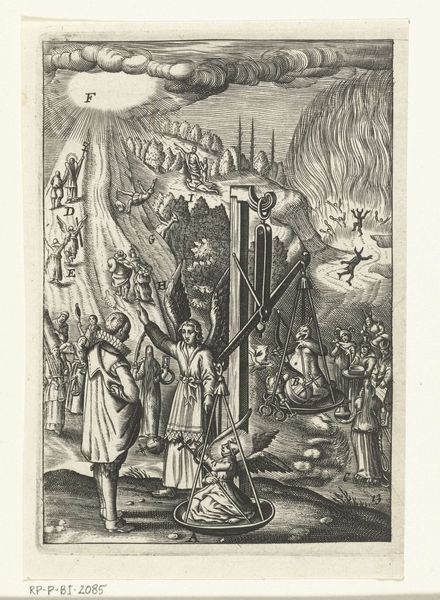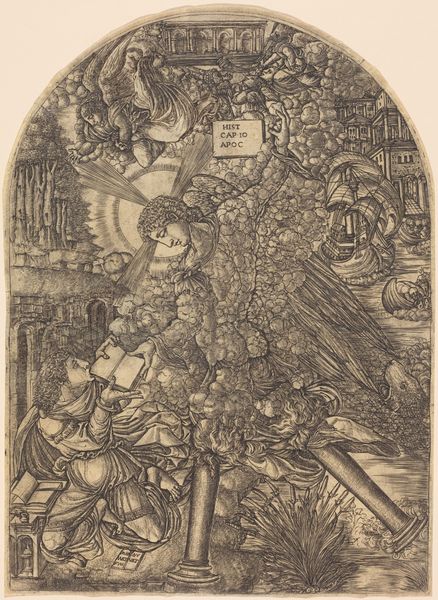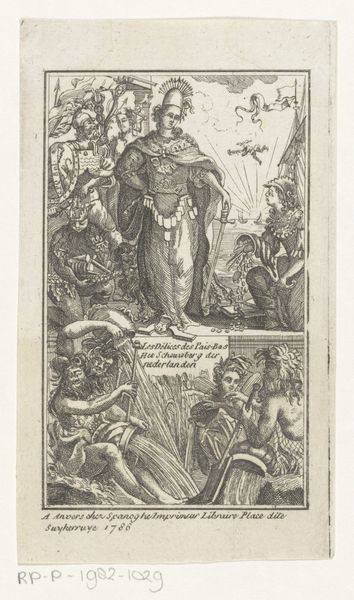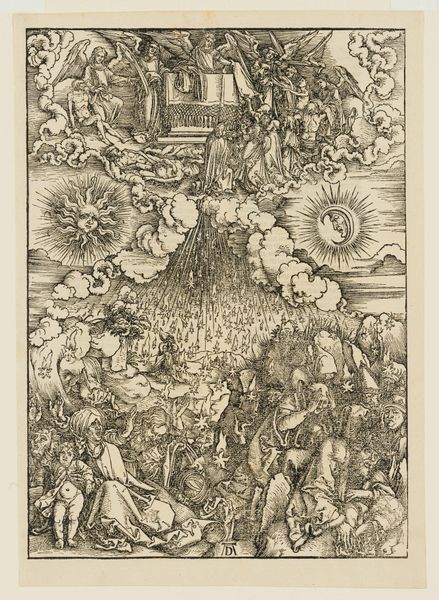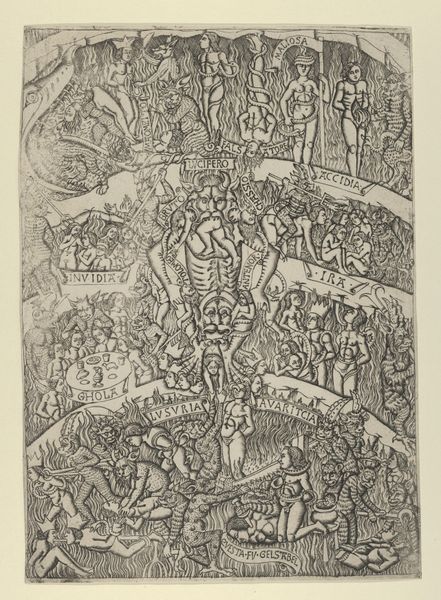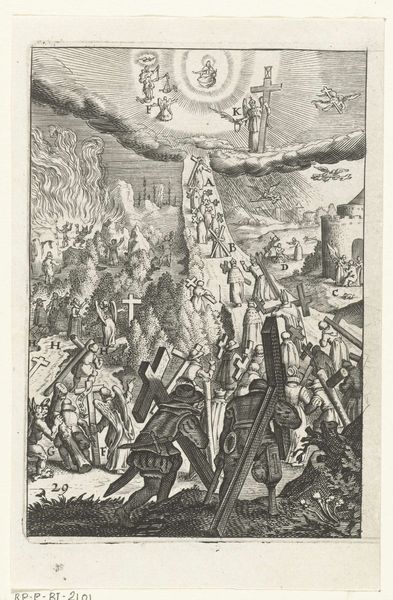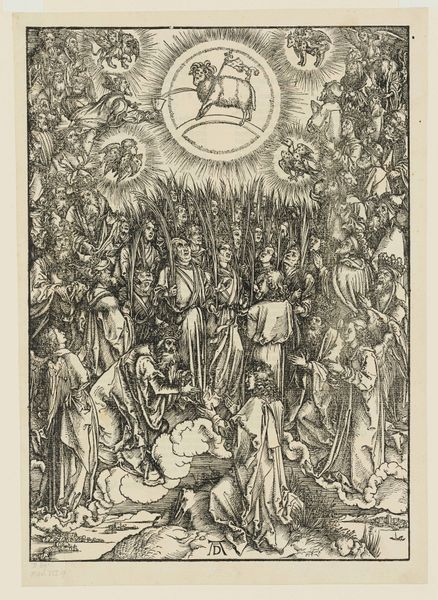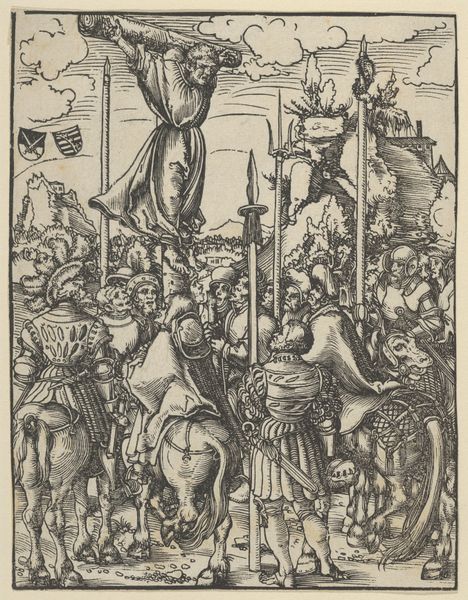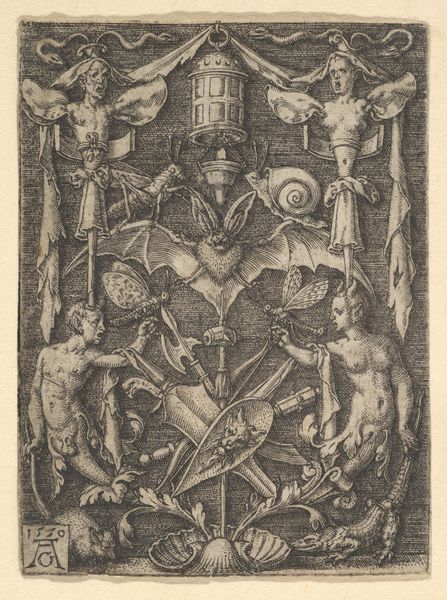
Dimensions: height 376 mm, width 236 mm
Copyright: Rijks Museum: Open Domain
Editor: This is *Oorlogstrofeeën*, or War Trophies, an engraving dating from around 1572-1585 by an anonymous artist. The scene feels very theatrical and laden with classical imagery. What stands out to you? Curator: Well, at first glance, I see a celebration—a grand, albeit ghostly, monument to military might. But when I let my eyes linger, I see something more complex, almost a critique embedded within the celebration. Notice how the trophies and weapons create a sort of idol. What does the idol stand for, do you think? Editor: Power, maybe? It definitely dominates the landscape, with these almost fragile-looking angels holding up the spoils of war. It's grandiose, yet there’s something unsettling about it. Curator: Precisely. Think about the time period. The late Renaissance was a time of religious and political upheaval. Wars were fought in the name of faith and ambition. This image, with its almost overwhelming display of weaponry, feels less like simple triumph and more like a monument *to* the sacrifices of war itself. Notice also the classical elements, Roman armor, and that distant architectural horizon: where does that cultural memory fit within the allegorical weight? Editor: I see what you mean. It's not just about victory; it's about the constant cycle of conflict and the heavy cultural baggage it carries. So those cherubic figures feel less like joyful angels and more like burdened witnesses to history. Curator: They become caryatids, supporting not a structure of hope, but a monument of conflict. And doesn't that shift our perception? Instead of reveling in victory, we're prompted to contemplate the long shadow that war casts. What does that image, that idol, ask of us? Editor: It makes me consider the stories we tell ourselves about war and glory. Thank you for showing me new ways to consider the symbology of victory and its true cost. Curator: Indeed. By exploring these symbols, we tap into the enduring cultural memory of conflict and the complexities of how it’s remembered.
Comments
No comments
Be the first to comment and join the conversation on the ultimate creative platform.
